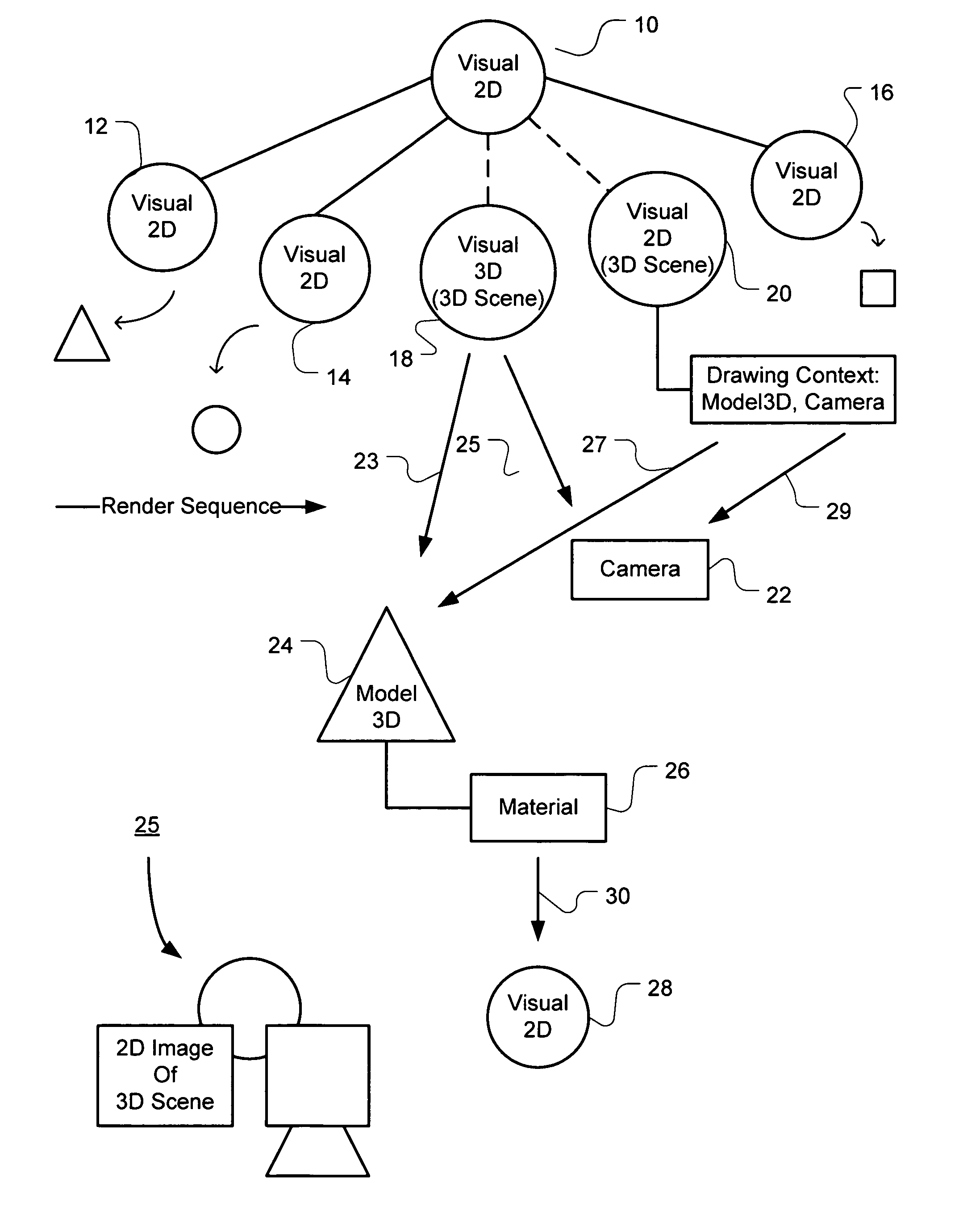Integration of three dimensional scene hierarchy into two dimensional compositing system
a compositing system and scene technology, applied in the field of computer graphics, can solve the problems of inability to maintain the refresh rate of hardware, the limitation of the traditional model of accessing graphics on the computer system, and the current model of preparing frames using bitmaps requires too much data processing to achieve the effect of ensuring the smooth transition of frames
- Summary
- Abstract
- Description
- Claims
- Application Information
AI Technical Summary
Benefits of technology
Problems solved by technology
Method used
Image
Examples
Embodiment Construction
[0020]In accordance with one embodiment of the invention, FIG. 1 illustrates 3D reference or scene objects integrated into a visual objects tree hierarchy so that the tree has both visual 2D objects and 3D reference or scene visual objects. “Visual”, when associated herein with objects, represents a drawing rendered on a computer display screen by the object. In this exemplary illustration of a visual tree, a root visual object 10 has four children with alternate embodiments for one child that is a 3D scene child. The visual 2D children are objects 12, 14, and 16, and one of the 3D scene objects 18 and 20 in the alternative is the fourth child of the root visual object 10.
[0021]The 3D scene object 18 is a visual 3D object 18 and contains a reference or pointer 23 to model 3D object(s) 24 and a reference or pointer 25 to a camera object 22 for viewing a 3D models as a 2D image. Visual 3D objects are described in more detail in the cross-referenced patent application entitled MODEL 3D...
PUM
 Login to View More
Login to View More Abstract
Description
Claims
Application Information
 Login to View More
Login to View More - R&D
- Intellectual Property
- Life Sciences
- Materials
- Tech Scout
- Unparalleled Data Quality
- Higher Quality Content
- 60% Fewer Hallucinations
Browse by: Latest US Patents, China's latest patents, Technical Efficacy Thesaurus, Application Domain, Technology Topic, Popular Technical Reports.
© 2025 PatSnap. All rights reserved.Legal|Privacy policy|Modern Slavery Act Transparency Statement|Sitemap|About US| Contact US: help@patsnap.com



